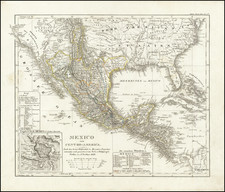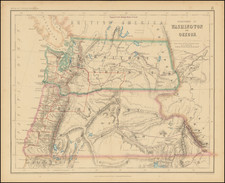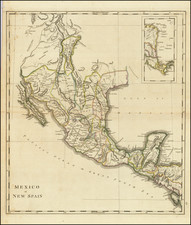Early Bird's Eye View of Aspen, Colorado from Smuggler's Hill.
This rare early birdseye view of Aspen appeared in Biennial report of the State school of mines, 1886, a publication of the Colorado School of Mines.
The view is the earliest detailed view of Aspen which we have ever seen and pre-dates by nearly a decade the Augustus Koch view of 1893. See linK: /gallery/detail/22013Of
Of further note, this view is from the opposite side of the Valley, providing a completely different view of Aspen. In addition, as a promotional map, the Koch view must in some respects be seen as stylized and optimized, whereas this view provides a much plainer and matter of fact view of the town at a significantly earlier date in its history.
Aspen's history can be traced to the winter of 1879, when a group of miners ignored pleas by Frederick Pitkin, governor of Colorado, to return across the Continental Divide due to an uprising of the Ute Indians. Originally named Ute City, the small community was renamed Aspen in 1880. The first mining claims were purchased in 1880. In 1881, Pitkin County was established and the Aspen times published its first newspaper. Also in 1881, the Independence Pass Road was completed. By 1882, Aspen had 1500 residents. After a lull when Gold production ended, Jerome B. Wheeler, visited Aspen and made a significant financial investment in the community. By 1885, Aspen had Electricity and a Telelphone System. By 1887, the Denver & Rio Grande Railroad had reached Aspen. I n1888, the Colorado Midland became the second railroad to reach Aspen.
In its peak production years of 1891 and 1892, Aspen surpassed Leadville as the United States' most productive silver-mining district. Silver production expanded due to the passage of the Sherman Silver Purchase Act of 1890, which doubled the government's purchase of silver.
By 1893, Aspen had banks, a hospital, two theaters, an opera house and electric lights. Economic collapse came with the Panic of 1893, when President Cleveland called a special session of Congress and repealed the act. Within weeks, many of the Aspen mines were closed and thousands of miners were put out of work. It was proposed that silver be recognized as legal tender and the Populist Party adopted that as one of its main issues; Davis H. Waite, an Aspen newspaperman and agitator was elected governor of Colorado on the Democratic Ticket; but in time the movement failed.









![[ Northern Pacific Railroad ] NEW 7-30 GOLD LOAN OF THE Northern Pacific Railroad Co. SECURED BY FIRST MORTGAGE ON RAILROAD AND LAND GRANT. SAFE! PROFITABLE! PERMANENT!](https://storage.googleapis.com/raremaps/img/small/101828.jpg)


![[DeWitt Clinton Copy] An Account of Expeditions to the Sources of the Mississippi, and through the Western Parts of Louisiana, to the Sources of the Arkansaw, Kans, La Platte, and Pierre Jaun, Rivers During the years 1805, 1806 and 1807. And a Tour through the Interior Parts of New Spain. in the year 1807.](https://storage.googleapis.com/raremaps/img/small/81745.jpg)

![[Mormon Trail] Utah And the Overland Routes to it, from the Missouri River: Published with](https://storage.googleapis.com/raremaps/img/small/66366.jpg)